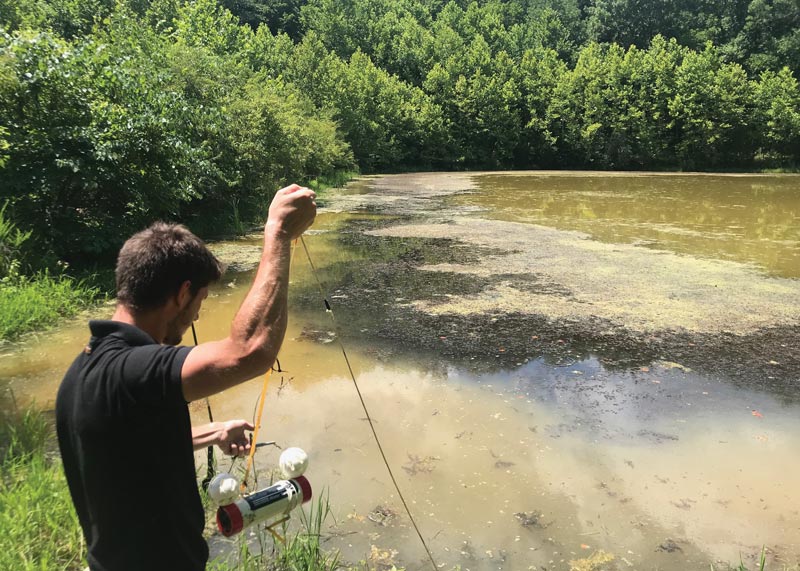
Photo by Gerald L. Miller
Editor’s note: This research was funded in part by a grant to GCSAA from the Environmental Institute for Golf.
Creeping bentgrass, which is often used on putting greens in the U.S. transition zone, is highly susceptible to diseases such as Pythium blight, root rot and root dysfunction, which lower the aesthetic quality of turf and create uneven surfaces that disrupt ball roll.
Pathogenic Pythium species are known to disseminate through irrigation systems in agricultural and greenhouse settings, but whether golf course irrigation may serve as a similar inoculum source is unknown.
Water samples (1.5 liters) were collected from irrigation heads and retention ponds to screen for the presence of pathogenic Pythium species. Zoospores were baited from a 500-milliliter aliquot using sterile creeping bentgrass leaves. Subsequently colonized leaves were cut in half and plated on media for isolation or used directly for DNA extraction.
The remaining liter was split in half and filtered using two Durapore filters. One filter was plated onto a Pythium-specific culture medium, and the other was used for direct DNA extraction. Mycelial colonies grown from bentgrass leaves and filters were transferred to fresh media to propagate biomass for DNA extraction.
Pythium was detected in seven of 11 irrigation sources sampled, and five locations produced samples containing two or more species. Six Pythium species have thus far been identified using these methods. One of these species, P. vanterpoolii, is aggressive and a known causal agent of Pythium root rot. Irrigation water may serve as a source of Pythium inoculum, and management strategies aimed toward reducing this inoculum may aid in disease control.
— Clayton A. Rushford and Gerald L. Miller, Ph.D., University of Missouri, Columbia, Mo.
Editor’s note: An earlier version of this summary was published in the 2018 ASA-CSSA Meeting Abstracts, ASA and CSSA, Madison, Wis.
Teresa Carson is GCM’s science editor.